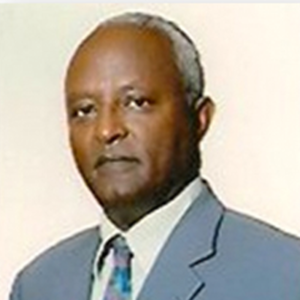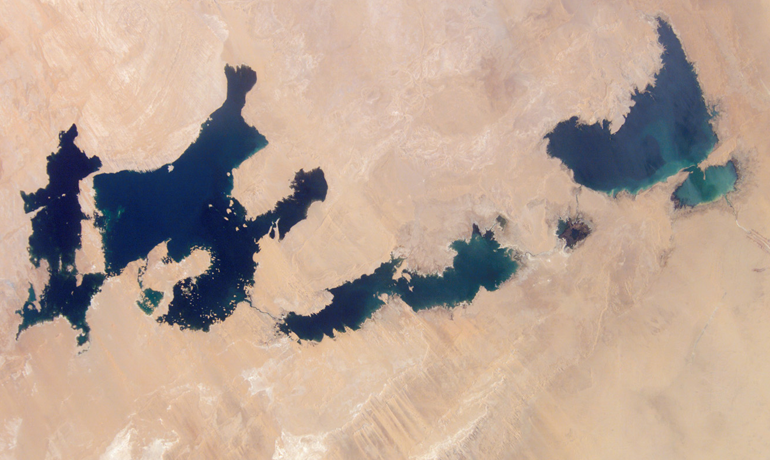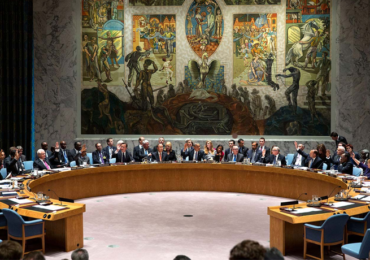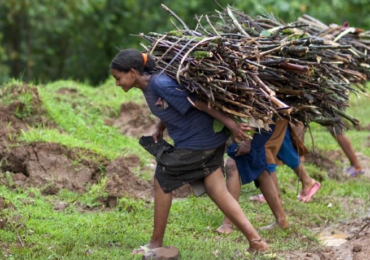In the past few years, Ethiopia’s energy requirements have increased immensely due to pressures in population, minimum living needs such as sanitation and lighting, and resource demands of vital projects that had not been undertaken or languished due to unmet demands for power. Ethiopia’s stalling economic development, and increasingly severe droughts have all been tied to lack of reliable energy sources, deforestation due to firewood use and huge foreign reserved outlay to purchase oil for power generation. Electric power in Ethiopia, especially hydropower like the Grand Ethiopian Renaissance Dam (GERD) will increase the available distributed power capacity to ignite this growing economy over the coming decade propelling Ethiopia past its lost decades.
When effectively utilized, both the Blue Nile and White Nile can provide solutions for all riparian countries the river flows through. The Mighty Nile, God’s gift to all the countries it flows through, requires sustainable, equitable use so all can build their respective countries’ economies. The Nile has served Sudan and Egypt for countless Millennia. Their oft repeated declaration of their “sole dependence” on the river, given their wealth in resources enabling them to create a diversified water and irrigation system, is a lack of foresight that does not invite sympathy. Sudan built the Roseries reservoir/ 1Sennar Dam and Lake Nubia in Northern Sudan and Egypt built the Lake Nasser reservoir/ Aswan High Dam in Southern Egypt. Both did so to create artificial means of regulating the natural flow of the Nile for their benefit. Ethiopia has built the GERD primarily for its own economic benefit, but the GERD will also help both downstream countries mitigate overflows of the Nile that have caused destructive floods in both countries in the past. The increased water regulation from the GERD will also provide additional planting opportunities through a more steady water flow enhancing crop rotations of more than 2 crops per year and further increase the availability of power from GERD thus creating employment and economic expansion throughout the three countries.
The word “Water Scarcity” is widely used by the government of Egypt defending the status quo in water distribution in the agreement in which it gave itself and Sudan 100% of controlling how the Nile waters are used. Under varying strategies, Egypt has tried to get Ethiopia to sign an agreement committing it to limit developments on the Abbay (Blue Nile) and Blue Nile tributaries inside Ethiopia. This harks back to colonial ploys of making countries sign away their sovereign rights, something Egypt should refrain from.
Neither Egypt nor Sudan consulted Ethiopia and the other riparian countries when they built the Roseries and Nasser reservoirs or the Tosha scheme. Instead, ignoring other Riparian countries’ objections they purposefully created demands on the river flowing from other countries without any thought those countries would want to use the water for their basic needs and economic development. Lake Nasser regulates the flow of water to the Aswan dam for power generation and reserves a high volume of water at the reservoir for irrigation uses throughout Egypt. Secondly the ill-conceived, politically motivated Toshka project was built without any consideration to the environmental impact and evaporation loss exposures. None of the upstream riparian countries get any benefit from Egypt’s Lake Nasser or the Toshka which is having a debilitating, destructive impact on the overall Nile Basin water supply reaching 15bcm a year. Let me share some facts about the Toshka Project that have a major impact on the water scarcity along the Nile river from Lake Nasser to Northern Egypt.What is the Goal of the Toshka project? The project name, Toshka, is a derivation of the name of an old Nubian village that the Egyptian government drowned when it created Lake Nasser. The Toshka Project is identified by the Egyptian government as a major national project designed to irrigate about 540,000 new feddans = (56,700 Acres) by elevating water from Lake Nasser. The estimated required water discharge is about 5.5 BCM/year taken at 265 km upstream of the High Aswan Dam (HAD). This large volume expelled from Lake Nasser has had a major transformational effect when irrigating the desert land. But its maintenance requirements are prohibitive, to say the least as the huge volume discharge is required to sustain the continued irrigation. Egypt’s current share of 55.5 BCM/year of Nile water and electric source for the project is dependent on the united network.
About 90 percent of Egypt’s electric generating capacity is thermal power and the remaining 4.7 percent is hydroelectric power generated mostly from the Aswan High Dam. Electricity demand, in Egypt, is growing from 5%-7% and has reached about 11% during the past year due to the increasing power demand.
“Toshka has a very specific importance, not only as a new area for people to move in, but also being close to the border with Sudan,” says Mahmoud Abu Zeid, who heads the Arab Water Council in Cairo and was Egypt’s water minister when Toshka was conceived.
“They called it ‘the march to the desert,’ and it was supposed to be literally a relocation of 20 percent of Egypt’s population focused mainly on youth.” It was also supposed to be a place to reintegrate workers who were coming back from places like Iraq, Saudi Arabia and Libya. But progress was slow, hampered by mismanagement, shady land deals and repeated delays in funding from both inside and outside Egypt. This project consists of three main parts: Canal intake, Mubarak Pump Station (MPS), and South Valley canal. The characteristics of MPS operation are as follow: The required annual water for the total area of the project is 5.5*109 m3 per year and the designed discharge capacity of a single pump is estimated to be about (17*106 m3/day).It is an open channel with 4.5 km length and 10 m width at the bottom with side slopes 2:1 (horizontal, vertical). It extends from Lake Nasser to the suction basin of the pump station. The path of canal intake was designed to reach a level of (+134.00 m) inside Lake Nasser by the minimum length and by the lowest cost. This design allows operating of the pump station at the minimum water level in Lake Nasser which is (+147.00 m).
Suction Basin The suction basin is deep with 48 m depth from the natural ground level (+182.00 m) where its base level is (+134.00 m). The dimensions of that basin are 167 m x 75 m at base level and rises with side slopes 2:1 (horizontal, vertical).
Pump House The Pump House is a concrete water-resistant structure inside the suction basin. Its dimensions are 140 m*45 m and 60 m in height. It is designed to resist earthquakes and consists of nine vertical stories starting at level (+132.30) and end at level (+188.30).
Mubarak Pump Station (MPS) Mubarak pump station is located on the left bank of Lake Nasser about 8 km north of Toshka spillway. The pump station is designed to raise water from Lake Nasser to Sheikh Zayed main canal with maximum static raise of 54 meters to cover the difference between the lowest level of lake storage at elevation 147 meters, and main canal water level at elevation 200 meters. The withdrawal from the lake will be through tunnels and discharge through pipelines with a total designed discharge of 25 M.m3/day that could be raised to a maximum of 37 million m3/day using 24 pumps.
The total annual volume required for the nominal irrigated perimeter over 540,000 feddans (562,600 acres) is 5.5 billion cubic meters. The peak discharge at the main pumping station is about 240 m3/sec, sustained for about 2 months in June and July with an average raise of 38 meters. The existing equipment of the pumping station, capable of discharging 334 m3/sec at maximum raise of 54 m, can easily accommodate this. The minimum requirements corresponding to the mid-January period would be about 67 m3/sec, less than one third of peak requirements. This water will be diverted northwestward, pumped out at the largest pump station in the world just north of Toshka outfall.
Overall Power and Energy Requirement Many studies were performed to determine the required power and the energy for the project. Operations scenarios are different in each study; one scenario slates the peak power demands for pumping stations at about 165 MW, of which 105 MW is allocated for main Mubarak Pumping Station. The associated annual energy requirements are about 950 GWh, of which 575 GWh is allocated for the main pumping station.
I want to guide you to go to Google Earth (3679113.6 E 2498258.9N) to view for yourself how Egypt uses this resource (less inhabitants and irrigation sites) that can be seen from the image.Lake Nasser and Lake Toshka (253KM). 3679113.6 E 2498258.9N)
Embed from Getty ImagesThe Toshka Pumping Station at Lake Nasser – there are 24 Pumps with 288MW capacity; 21 of them are used to pump water to Lake Toshka; the remaining 3 are kept for reserve.
Mr. Mohammed Al Shamaa, in his July article on Arab News 45, stated his country’s standard propaganda line, ”Egypt, which is almost entirely dependent on the Nile for its fresh water, fears the dam will diminish its water supply, which is already below scarcity”. The complete lie of the “below scarcity” assertion could easily be refuted by referring to the NOAA National Weather Service, Climate prediction Center showing the predicted high rainfall precipitation in Sudan and Ethiopia for this year. In addition, Mr. Al Shamaa only needs to travel to South Egypt to see Lake Nasser at its highest capacity of 162 BCM for the last two years why his words are unacceptable. Ethiopia’s schedule to fill the GERD with the 1st fill of 4.9BCM should not be raised as an issue unless the plan is to create unnecessary hindrances to the negotiations. Instead of creating unnecessary doubts among the people of Egypt, he needs to address the issue from facts. This evidence and tangible proof should bring the two nations to come together to an equitable distribution and usage of this natural resources for the riparian countries.
Neither Ethiopia nor other Nile riparian countries should be held back by the 1959 Nile Waters Agreement between the Sudan and Egypt. These agreements never included Ethiopia, which supplies 86% of Nile waters, or other upstream countries. Egypt and Sudan must find a common ground to use this critical resource that can make a major difference to the livelihood of 110 million Ethiopians.
Finally, Roseries Reservoir of Sudan, Lake Nasser of Egypt and GERD will have adequate water from this year’s projected rainfall as noted by NOAA national Weather service. The abundance of water reserves in Lake Nasser should alleviate Egypt’s concerns about the GERD’s filling schedule of 4.9bcm and 18.5bcm within the next two years. I urge the people of Egypt to better educate themselves not just of this fact but to better understand the Nile as a resource shared between 11 countries and in the future to envision a better life, not just for themselves but for all their African brothers and sisters. Understanding and openness can bring us the solution by reckoning to the facts and science.

Eng. Behailu Assefa
Eng. Behailu Assefa is a Managing Director of ASC Engineering Service and Terra Global Energy Developers engaged in the design and implementation of 400MW wind power project in the Debra Berhan region of Ethiopia. He can be reached at bassefa[at]asceng.net



